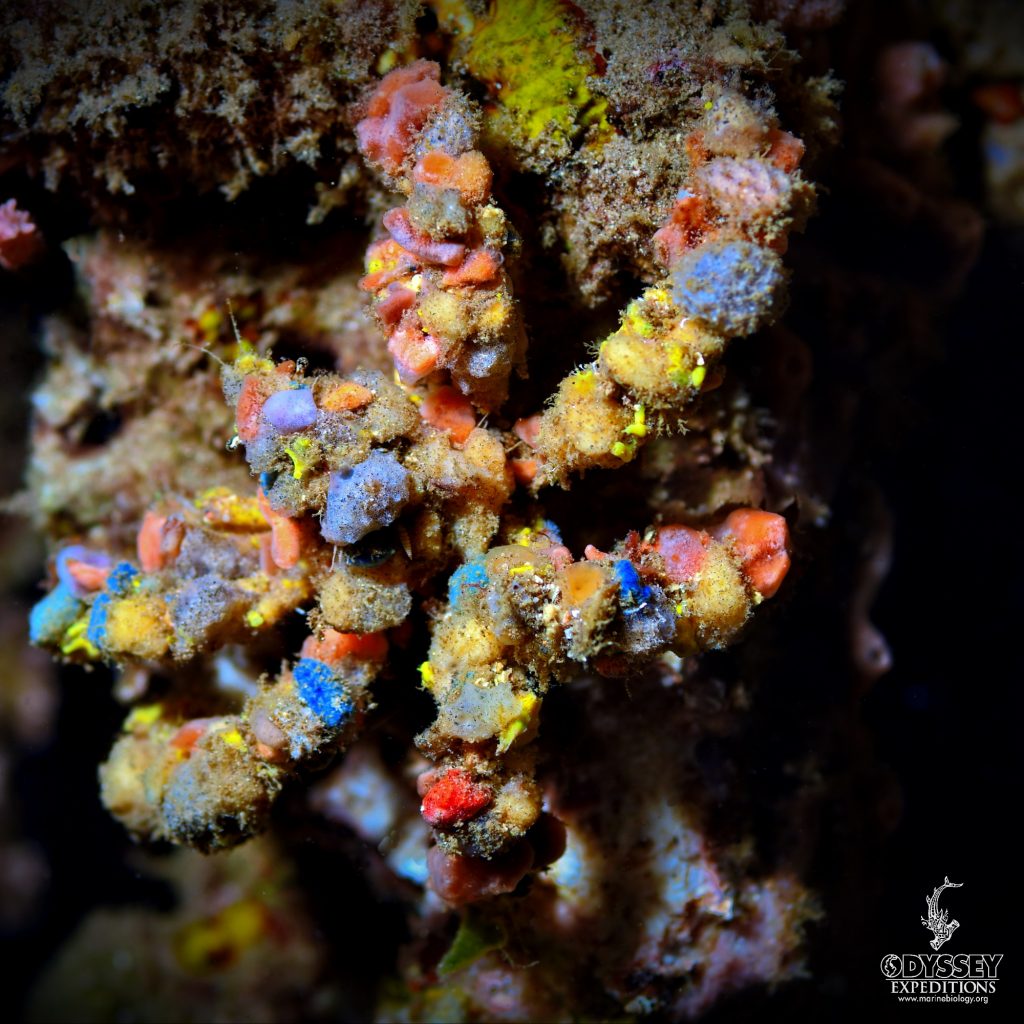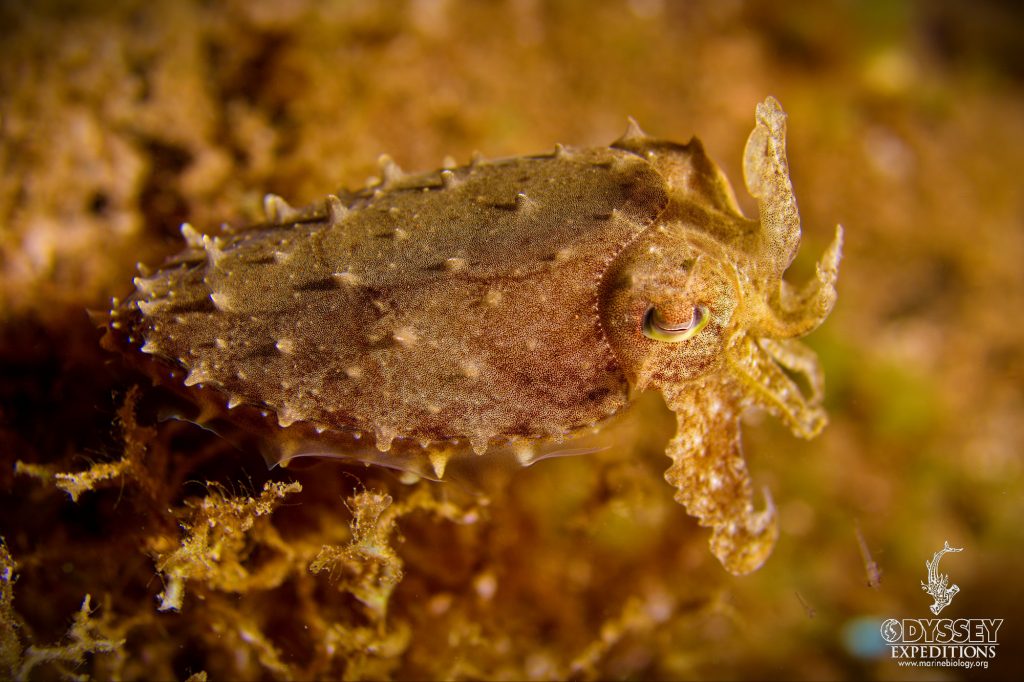
Ambon Crinoid Shrimp or Feather Star Shrimp – Periclimenes amboinensis – Hiding among the arms of the crinoid this little shrimp wondered if I could see him.
Small in size, between 1 – 1.5 cm, they can be highly variable in colors – Yellow, White,Black,Blue,Orange,Green,Brown and in combination of colors, all depending on the host Crinoid that it lives on, for camouflage.
Crinoids, also known as “feather stars” or comatulids are harmless, colorful creatures. They are among the most ancient and primitive of ocean invertebrates. Crinoids are Echinoderms (Phylum Echinodermata, meaning “spiny skin”). To feed, they extend their arms to catch bits of plankton or detritus (waste matter) passing in the current, making them “suspension feeders”.
Etymology of amboinensis Means “from Ambon” the island in the Lesser Sunda Islands, Indonesia.
Etymology of Crinoid – Greek word krinon, “a lily”, and eidos, “form”






